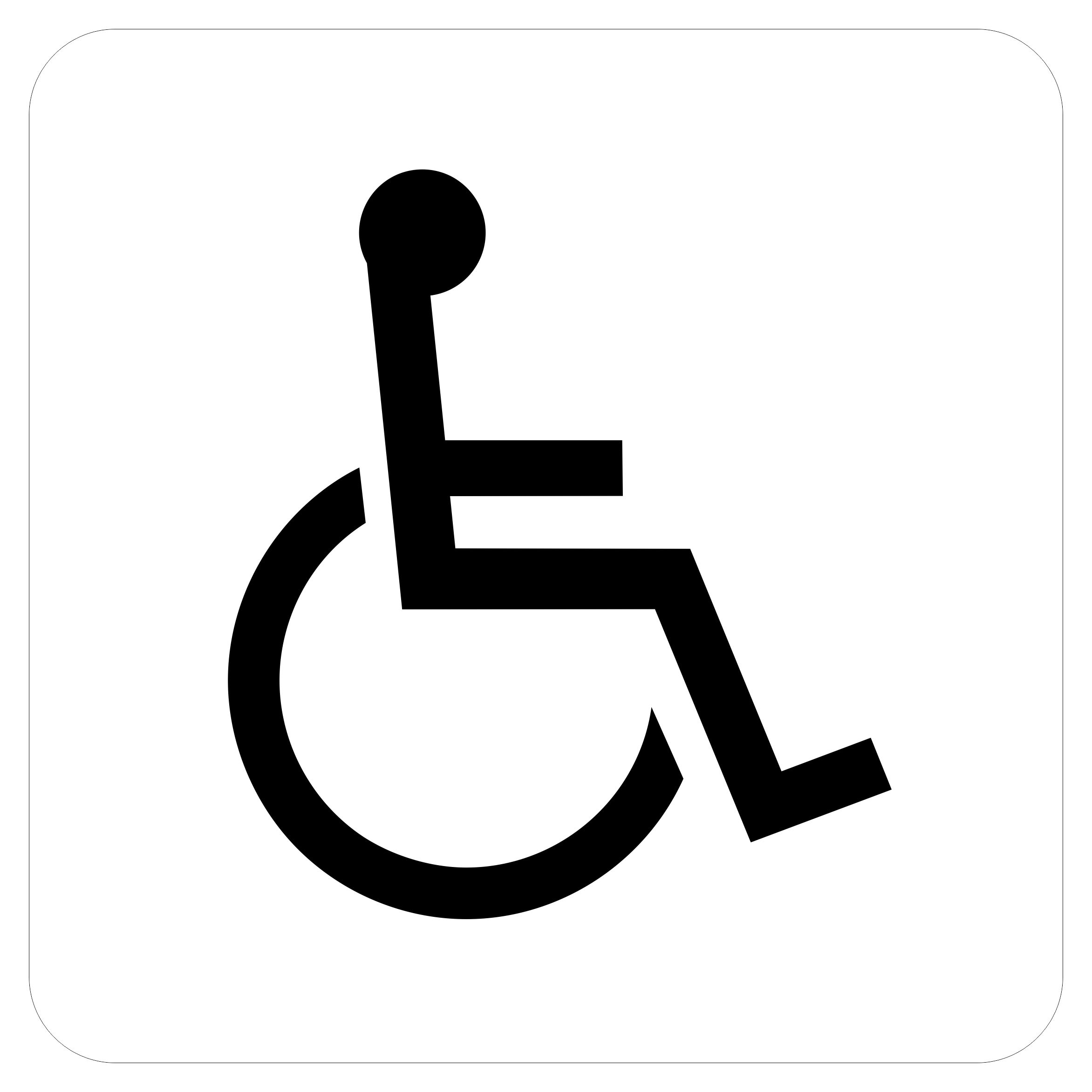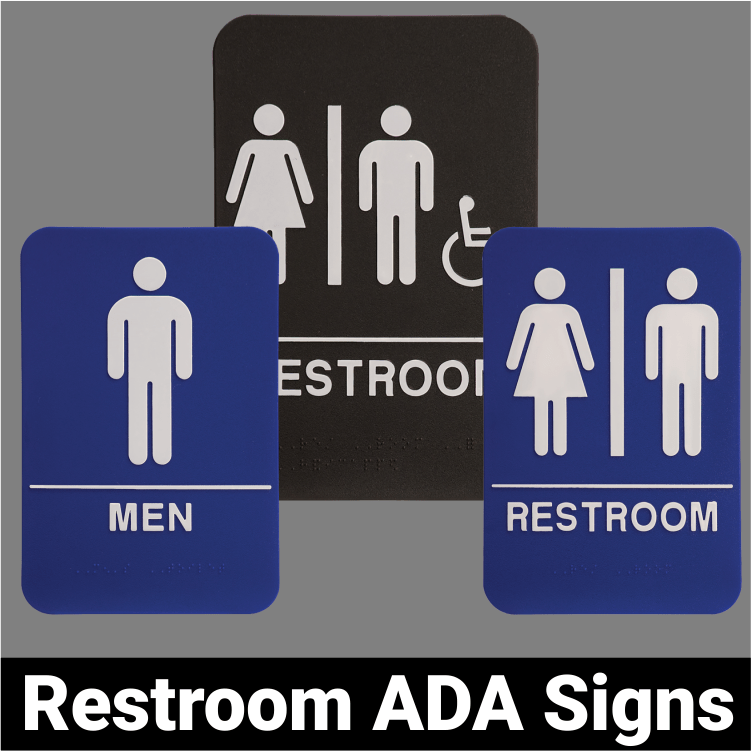Customizing ADA Signs to Meet Your Details Needs
Customizing ADA Signs to Meet Your Details Needs
Blog Article
Exploring the Key Features of ADA Signs for Enhanced Ease Of Access
In the realm of availability, ADA signs offer as silent yet effective allies, guaranteeing that rooms are accessible and inclusive for people with disabilities. By incorporating Braille and tactile components, these signs damage barriers for the aesthetically impaired, while high-contrast shade systems and readable fonts provide to varied aesthetic demands.
Value of ADA Compliance
Making sure compliance with the Americans with Disabilities Act (ADA) is critical for promoting inclusivity and equivalent accessibility in public spaces and work environments. The ADA, established in 1990, mandates that all public facilities, employers, and transportation solutions accommodate people with handicaps, guaranteeing they enjoy the exact same rights and opportunities as others. Compliance with ADA criteria not just fulfills legal obligations yet additionally enhances an organization's credibility by showing its commitment to diversity and inclusivity.
One of the essential elements of ADA compliance is the implementation of easily accessible signs. ADA indicators are designed to make certain that individuals with impairments can quickly navigate with structures and spaces. These indications need to stick to details standards pertaining to dimension, font style, shade comparison, and positioning to assure exposure and readability for all. Effectively carried out ADA signs assists get rid of barriers that people with disabilities commonly run into, consequently promoting their independence and confidence (ADA Signs).
Furthermore, adhering to ADA laws can alleviate the threat of prospective fines and lawful consequences. Organizations that fail to follow ADA guidelines may face charges or lawsuits, which can be both monetarily challenging and destructive to their public photo. Thus, ADA compliance is important to fostering a fair environment for every person.
Braille and Tactile Components
The incorporation of Braille and responsive components right into ADA signage personifies the principles of accessibility and inclusivity. These features are important for individuals that are blind or visually damaged, enabling them to browse public spaces with greater independence and confidence. Braille, a responsive writing system, is important in giving written information in a format that can be conveniently perceived through touch. It is typically put beneath the corresponding message on signage to make sure that individuals can access the info without aesthetic assistance.
Responsive aspects prolong beyond Braille and consist of elevated icons and characters. These elements are developed to be discernible by touch, allowing individuals to recognize room numbers, bathrooms, leaves, and various other essential locations. The ADA establishes particular standards relating to the dimension, spacing, and positioning of these tactile elements to enhance readability and make sure uniformity across different environments.

High-Contrast Color Design
High-contrast shade schemes play a pivotal duty in enhancing the presence and readability of ADA signs for individuals with aesthetic impairments. These systems are essential as they take full advantage of the difference in light reflectance in between text and history, making sure that indications are quickly discernible, also from a distance. The Americans with Disabilities Act (ADA) mandates making use of details color contrasts to suit those with limited vision, making it an important aspect of conformity.
The effectiveness of high-contrast colors exists in their ability to stick out in various illumination conditions, consisting of dimly lit settings and areas with glow. Generally, dark message on a light background or light text on a dark history is used to achieve optimum comparison. As an example, black text on a yellow or white background gives a plain visual distinction that helps in fast acknowledgment and comprehension.

Legible Fonts and Text Size
When taking into consideration the style of ADA signage, the choice of clear fonts and appropriate message dimension can not be overstated. The Americans with Disabilities Act (ADA) mandates that font styles have to be sans-serif and not italic, oblique, manuscript, highly decorative, or of uncommon form.
The dimension of the text also plays a pivotal duty in access. According to ADA guidelines, the minimum message elevation should be 5/8 inch, and it must raise proportionally with viewing range. This is especially vital in public areas where signage needs to be checked out quickly and precisely. Consistency in message size adds to a natural visual experience, assisting people in navigating settings efficiently.
Moreover, spacing in between letters and lines is essential to clarity. Adequate spacing prevents personalities from appearing crowded, enhancing readability. By adhering to these standards, developers can considerably boost access, making sure that signage serves its desired objective for all individuals, regardless of their aesthetic abilities.
Efficient Positioning Methods
Strategic positioning of ADA signs is crucial for making best use of ease of access and making sure conformity with legal criteria. Correctly positioned signs assist people with disabilities effectively, facilitating navigation in public spaces. Trick factors to consider include height, visibility, and distance. ADA standards state that indications ought to be installed at an elevation between 48 to 60 inches from the ground to ensure they are within the line of view for both standing and seated individuals. This common elevation array is essential for inclusivity, making it possible for mobility device customers and people of differing heights to access information easily.
In addition, signs should be placed beside the lock side of doors to allow very easy recognition prior to access. This placement helps people find spaces and spaces without blockage. this website In situations where there is no door, signs need to be positioned on the closest adjacent wall surface. Uniformity in sign placement throughout a center enhances predictability, minimizing confusion and boosting general user experience.

Verdict
ADA indications play an important role in advertising ease of access by incorporating functions that deal with the requirements of individuals with specials needs. use this link These elements collectively foster a comprehensive setting, underscoring the significance of ADA conformity in making sure equal accessibility for all.
In the realm of ease of access, ADA signs serve as quiet yet effective allies, guaranteeing that spaces are comprehensive and navigable for individuals with disabilities. The ADA, established view website in 1990, mandates that all public facilities, employers, and transportation services fit people with specials needs, ensuring they appreciate the same legal rights and possibilities as others. ADA Signs. ADA indications are developed to ensure that people with disabilities can quickly navigate through spaces and structures. ADA standards state that signs must be placed at a height in between 48 to 60 inches from the ground to guarantee they are within the line of sight for both standing and seated people.ADA signs play a vital function in promoting ease of access by integrating features that attend to the needs of people with handicaps
Report this page